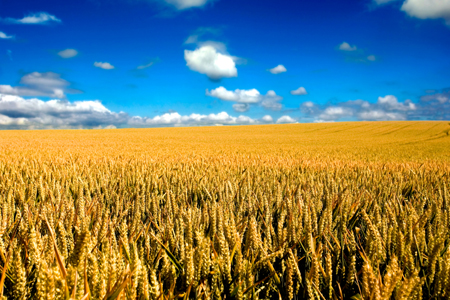 (Agrimoney) – The US is poised for more of the Goldilocks, “just right” weather which helped corn crops achieve a seasonally-unusual improvement in condition last week, although soybeans failed to show the advance that investors expected.
(Agrimoney) – The US is poised for more of the Goldilocks, “just right” weather which helped corn crops achieve a seasonally-unusual improvement in condition last week, although soybeans failed to show the advance that investors expected.
Much of the Midwest “will continue to see favourable conditions for crops”, said World Weather, noting a benign mixture of rain for areas that need it, and drier conditions for regions where excess moisture has been a problem.
“A good mix of sunshine and rain is expected, with most areas not likely to receive enough rain to prevent overall drying during the period,” the weather service said.
“The drying expected will benefit the remaining excessively wet areas in the lower Midwest.”
Global trend
MDA said that “rains in north western [Midwest] areas this week should further improve moisture, while wetness eases further in south areas”, noting the potential for weather improvements outside the US too.
“Heavy rains in the south central and eastern Prairies will further ease dryness this week,” said MDA’s Kyle Tapley, with a dearth of moisture having posed a large setback for Canada’s crops.
Concerns over the Western Canadian crop reached levels such that BMO Bank of Montreal on Monday unveiled a relief programme including deferred loan payments and potential fee waivers for farmers affected by the “significant drought conditions”.
MDA also said that “heavy” rains are also set for China’s North China Plains this week, “which should lead to a significant improvement in soil moisture, favouring corn and soybean growth”.
Needed rains are also expected in Western Australia, “with some heavy amounts possible on Friday”, leaving Europe a notable exception in terms of being a major grain growing area not expected to see much of a weather improvement.
Corn improves
The forecast came even as the US Department of Agriculture highlighted the benefit to the US corn crop from benign weather last week, rating the US crop as 70% “good” or “excellent” as of Sunday.
That represented a 1-point rise week on week, an increase in line with market expectations, but a rise unusual nonetheless for late July, when summer heat is typically taking some toll on crops.
Only once before in the last decade has US corn improved in this week, in 2008.
However, such was the favourability of the weather that investors were somewhat disappointed that soybeans, which are also typically declining at this time of year, did not improve either, remaining rated at 62% good or excellent.
‘Favourable weather at last’
Still, condition of both crops improved in many states where excessive moisture has been a problem, such as Michigan, where USDA scouts noted that, bar a storm on Saturday, “of the state saw sunshine, seasonable temperatures all week, and only light precipitation all week.
“Producers in southern counties welcomed the change in the weather as it helped saturated fields to dry out and crops to mature,” with too little rain now an issue in some areas further north.
In the major growing state of Illinois, crops improved amid a spell of “below average rainfall”, which allowed a drop of 12 points to 30% in the proportion of topsoil reckoned to have “surplus” moisture.
Scouts in Ohio welcomed “favourable weather at last”, with most of the state receiving “relief from the wet and humid weather that has prevailed over most of the season”.
“The benefits of rescue efforts such as nitrogen application in corn was apparent,” as drier conditions allowed farmers back onto fields.
‘Vomitoxin issues’
However, the scouts also noted setbacks in some states, such as South Dakota, where crop condition declined after “weekend storms brought rain and strong winds”, and hail, to some areas.
In the key growing state of Iowa, “there were reports of crop stress due to the hot, dry weather, as well as weed problems in soybeans”.
And, in the soft red winter wheat crop, officials continued to highlight the damage wrought earlier by excessive moisture, even as drier weather allowed farmers to get ahead in harvesting.
Michigan officials noted that while “initial reported yields have been good, moisture content has been high and some vomitoxin issues have been reported”, vomitoxin being a toxic fungal residue, known as Don in Europe, which can render grain unfit even for feed use.
Ohio officials said that “growers harvesting wheat found sprouting in lodged fields, low test weights, and vomitoxin levels created difficulties in marketing the crop”.
Elevator rejections
The comments follow a report on Friday from US Wheat Associates, cautioning that on one key quality measure, the falling number, the soft red winter wheat tested last week showed the worst reading since surveys began in 1998.
The falling number – a measure of kernel sprouting, which cuts suitability for milling use – came in at 286 seconds, down from 300 seconds the week before, and falling beneath a previous weekly low of 294 seconds reached in 2013.
The drop in the falling number, also known as the Hagberg number, was “primarily due to samples from Illinois and Missouri where heavy rains and wet fields have hampered harvest for a significant period of time.
“There may not be any further data from Missouri because elevators are rejecting the heavily damaged wheat that remains to be delivered.”




